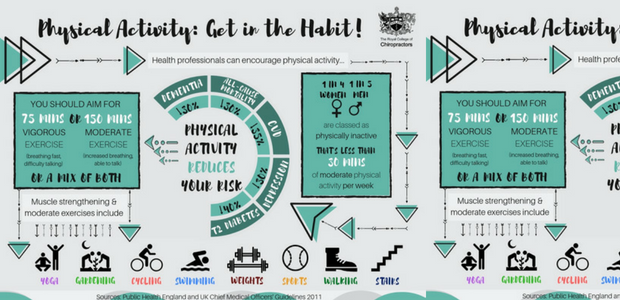The Function Of Position In Back Pain: Tips For Achieving And Maintaining Good Placement Throughout Your Day
The Function Of Position In Back Pain: Tips For Achieving And Maintaining Good Placement Throughout Your Day
Blog Article
Published By-Conway McIntyre
Preserving appropriate posture isn't nearly sitting up directly; it has to do with aligning your body in a way that sustains your spinal column and reduces the danger of neck and back pain. The means you rest, stand, and relocate throughout the day can considerably impact your spinal health. Yet how specifically can you ensure good positioning consistently, even during hectic days loaded with different activities? Allow's delve deeper right into the subtle yet impactful adjustments you can make to your daily routine to keep your back pleased and healthy and balanced.
Importance of Appropriate Stance
Proper posture is important in keeping a healthy and balanced back and protecting against pain. When you sit or stand with excellent pose, your back remains in alignment, decreasing pressure on your muscle mass, tendons, and joints. This positioning enables the body to disperse weight equally, avoiding too much stress on particular areas that can result in pain and discomfort. By maintaining your back correctly straightened, you can also improve your breathing and digestion, as slouching can press organs and limit their performance.
Furthermore, maintaining good pose can improve your total appearance and self-esteem. When you stand tall with your shoulders back and head held high, you show self-confidence and show up even more approachable. Excellent pose can also make you feel more stimulated and sharp, as it advertises proper blood circulation and permits your muscle mass to work effectively.
Incorporating appropriate position right into your day-to-day regimen, whether resting at a workdesk, strolling, or working out, is important for stopping neck and back pain and promoting general well-being. Remember, https://www.theguardian.com/music/2021/sep/30/jessye-normans-family-sue-over-treatment-that-allegedly-left-her-paralysed in how you hold yourself can make a substantial difference in how you feel and function throughout the day.
Common Postural Mistakes
When it involves preserving great stance, lots of individuals unwittingly make common mistakes that can add to back pain and pain. Among the most common mistakes is slumping over or hunching over while resting or standing. This placement places excessive stress on the back and can bring about muscle mass discrepancies and discomfort over time.
Another common blunder is overarching the lower back, which can flatten the all-natural contour of the back and create pain. Furthermore, crossing legs while sitting may feel comfortable, however it can produce a discrepancy in the hips and hips, leading to postural concerns.
Utilizing a cushion that's too soft or as well firm while sleeping can additionally influence your alignment and add to back pain. Last but not least, continuously craning your neck to take a look at screens or readjusting your setting regularly can strain the neck and shoulders. Bearing in mind these usual postural mistakes can help you preserve far better alignment and minimize the threat of pain in the back.
Tips for Correcting Positioning
To boost your alignment and reduce pain in the back, it's essential to focus on making small changes throughout your everyday regimen. Start by being mindful of your pose. When sitting, guarantee your feet are flat on the flooring, your back is straight, and your shoulders are unwinded. Avoid slouching or leaning to one side. Use ergonomic chairs or paddings to sustain your lower back.
When standing, disperse your weight equally on both feet, maintain your knees somewhat bent, and embed your pelvis. Involve your core muscular tissues to support your spinal column. Take extreme pain in lower back when standing up to extend and walk around if you have an inactive task. Include workouts that strengthen your core and back muscles, such as slabs or bridges.
While sleeping, utilize a cushion that sustains the natural curve of your neck to maintain correct spinal alignment. Avoid sleeping on your stomach, as it can stress your neck and back. By being mindful of these ideas and making small adjustments, you can progressively correct your alignment and reduce pain in the back.
Verdict
Remember, preserving excellent posture is crucial to preventing neck and back pain and promoting spine health and wellness. By being mindful of your alignment, dispersing weight uniformly, and engaging your core muscular tissues, you can decrease strain on your back and decrease the danger of pain and injury. Integrate ergonomic support, take normal breaks to extend, and strengthen your core and back muscles to keep appropriate alignment throughout the day. Your back will certainly thank you for it!
